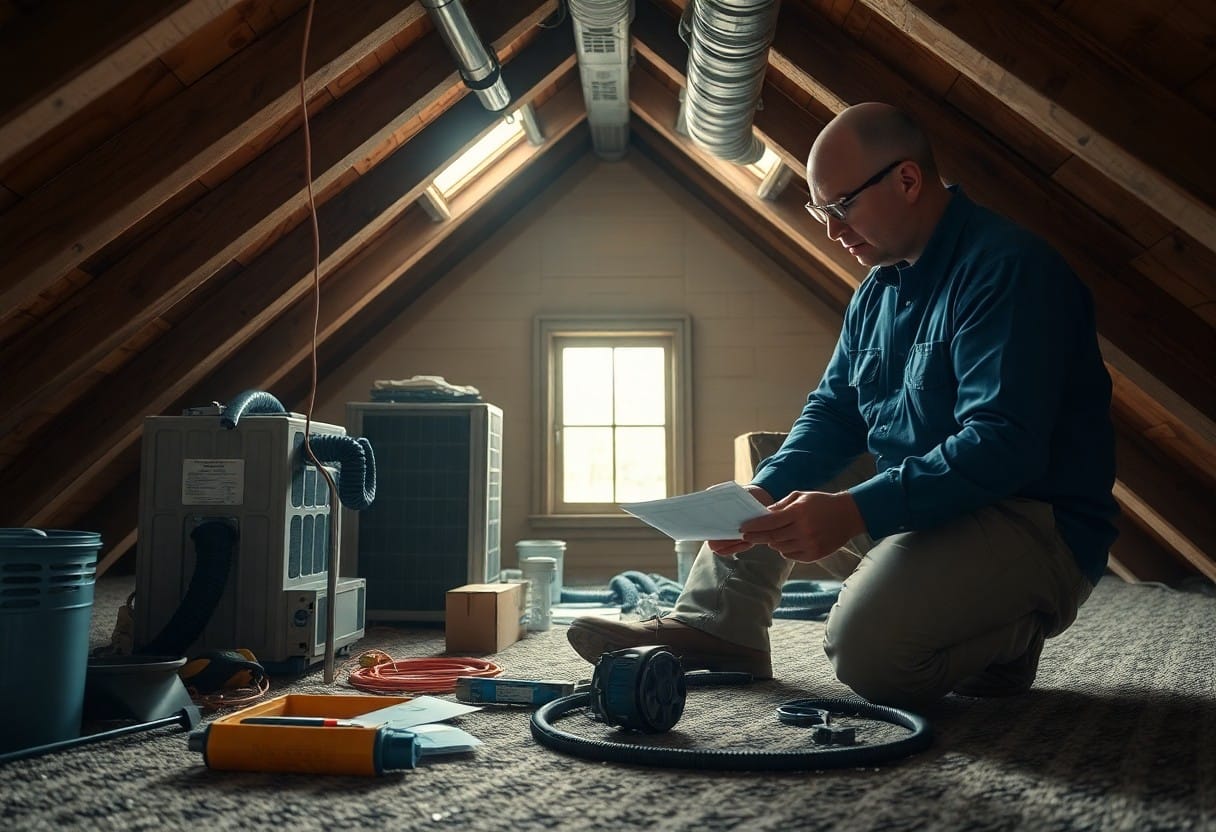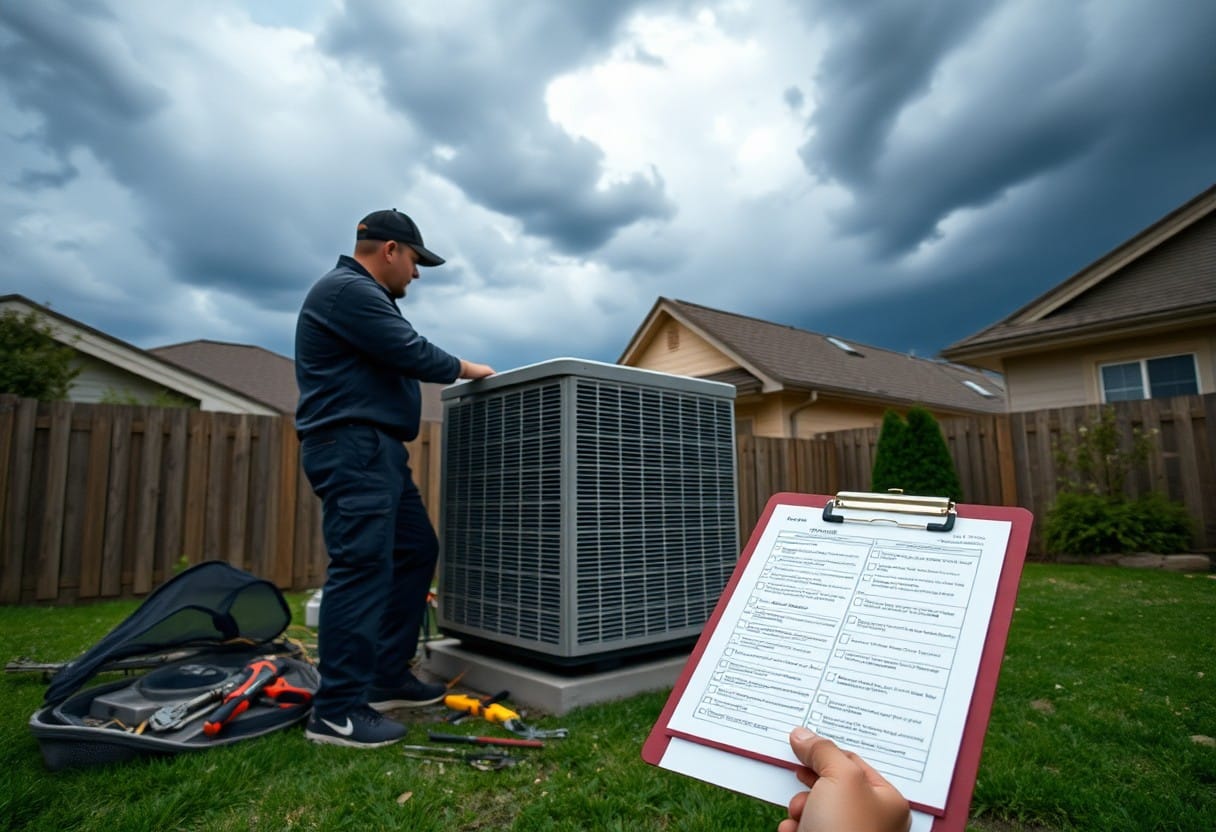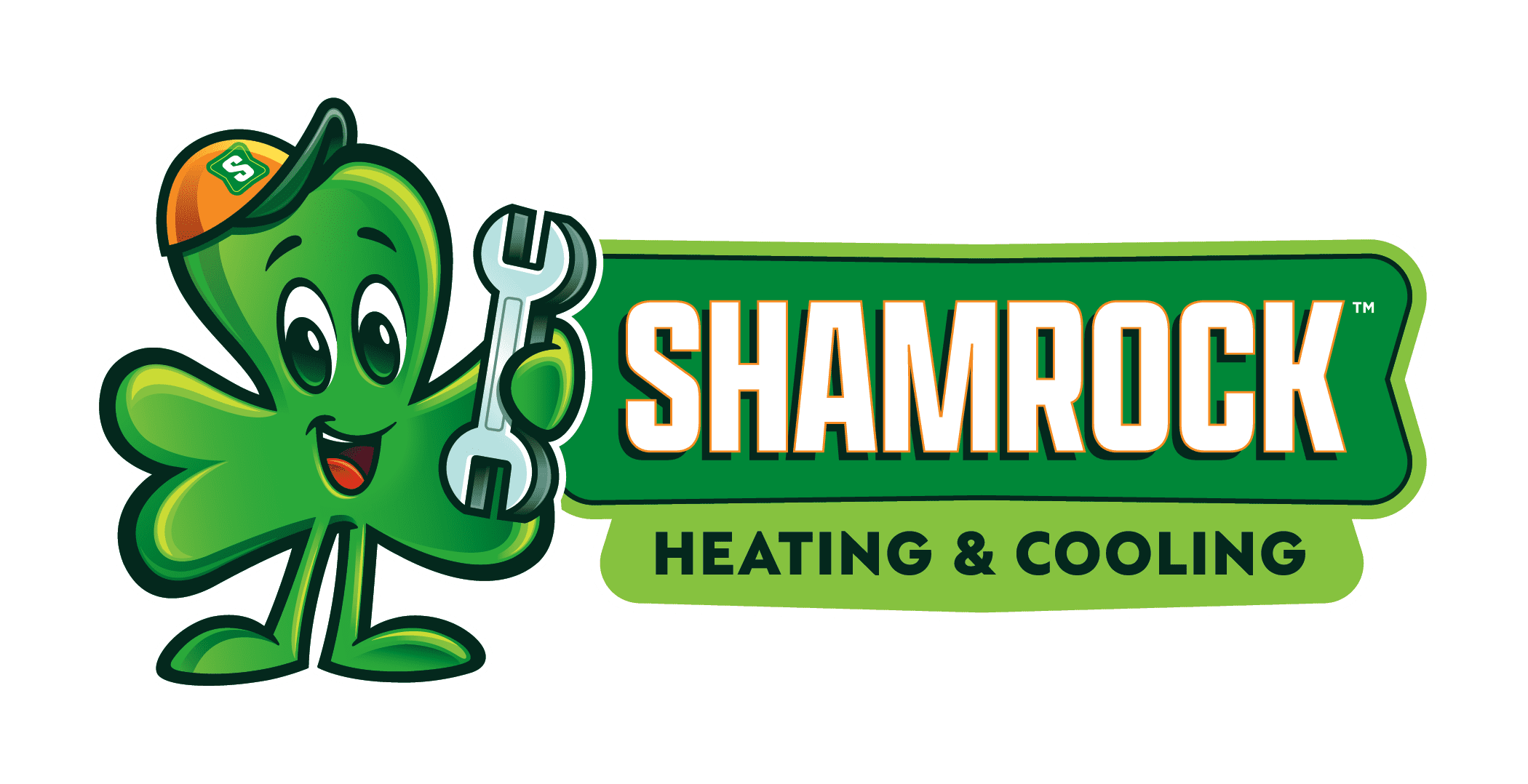There’s no better time than now to prepare your HVAC system for the upcoming monsoon season in Phoenix. Ensuring your system is ready not only enhances its efficiency but also protects your home from the potential damages of heavy rain and humidity. By following this crucial checklist, you can prevent costly repairs and improve air quality, providing a safe, comfortable environment for your family during unpredictable weather. Prioritize your HVAC maintenance to secure your peace of mind this monsoon season.
Importance of Pre-Monsoon HVAC Preparations
Understanding Seasonal Weather Impact
The pre-monsoon season in Phoenix brings rising temperatures and increased humidity, which directly affects your HVAC system’s efficiency. Your air conditioning unit must work harder to maintain a comfortable indoor environment as the outdoor temperature climbs. A neglected HVAC system can struggle to keep up, leading to elevated energy costs and uncomfortable conditions in your home. Additionally, sudden rain and storms can cause unexpected power surges, potentially damaging your HVAC equipment.
Failing to prepare your system can result in equipment malfunctions during the height of the monsoon season. An averaged 16% increase in strain on air conditioning units during these months amplifies wear and tear, leading to more frequent breakdowns. Ensuring your system can handle the seasonal transition is key to maintaining its longevity and operational efficiency.
Benefits of Preventative Maintenance
Conducting routine maintenance before the monsoon season can substantially increase your HVAC system’s reliability. Replacing air filters, cleaning coils, and checking refrigerant levels are simple yet effective measures that enhance performance. A well-maintained unit can operate at up to 95% efficiency, maximizing comfort while minimizing your energy bill.
Timely inspections can also help identify potential issues before they escalate into costly repairs. For example, addressing minor leaks or worn-out components early on can save you anywhere from $100 to $500 in emergency repair costs. Preventative care not only preserves your HVAC system but can also extend its lifespan by several years.
The tangible benefits of preventative maintenance don’t stop at savings. Enhanced indoor air quality, which is vital during pollen-rich spring months, directly ties back to regular upkeep of your HVAC system. Improved filtration systems can remove allergens and pollutants, ensuring that you breathe clean, healthy air as the season changes. By investing in these preventative measures, you create a safer and more comfortable living environment for you and your family.

Essential HVAC System Components to Inspect
Air Filters
Inspecting air filters is a straightforward yet vital task for ensuring your HVAC system operates efficiently. Clogged or dirty filters restrict airflow, forcing your system to work harder and potentially leading to costly repairs. Aim to check your filters monthly, especially during the pre-monsoon season, and replace them every three months or as needed. This simple act can improve indoor air quality and extend the lifespan of your unit.
By keeping your air filters clean, you can also minimize allergens and dust circulating throughout your home. A well-maintained filter not only enhances your comfort but can lead to energy savings of up to 15%.
Refrigerant Levels
Refrigerant levels play a significant role in the efficiency of your HVAC system. Low refrigerant levels can lead to inadequate cooling and increased energy consumption, putting extra strain on your unit. Inspecting for leaks and ensuring your system is properly charged is imperative for optimal performance as temperatures rise. Routine maintenance checks can help identify any issues before they escalate.
During the pre-monsoon season, having the right refrigerant levels can also protect your system from overheating, which can be particularly harmful as humidity levels change. Engaging a professional for this inspection ensures that your system not only complies with local regulations but also operates safely and effectively.
Condenser Coils
Regularly checking your condenser coils is key to maintaining efficient cooling. Dust and debris can accumulate on the coils, reducing their ability to dissipate heat. This inefficiency forces the system to operate longer than needed, leading to increased wear and higher energy bills. Cleaning these coils, especially after the dry heat of summer, prepares your system for the moisture-laden air of the monsoon season.
Use a soft brush or a vacuum on its lowest setting to gently remove any build-up. For more thorough cleaning, consider a professional service that can ensure all components, included the fins, are appropriately cared for.
Ductwork Integrity
Inspecting your ductwork is imperative to maintaining your HVAC system’s efficiency. Leaks or blockages in duct systems can significantly reduce airflow, leading your system to work harder and consume more energy. You may notice higher energy bills or inconsistent temperatures throughout your home if your ducts are compromised. Sealing any gaps or holes can restore efficient airflow.
Encapsulating your ducts with insulation can also enhance performance, especially in unconditioned spaces like attics and basements where temperature fluctuations are prevalent. Consider hiring a professional to ensure your ductwork is sealed correctly, as this investment can yield substantial energy savings.

Cleaning and Maintenance Procedures
Deep Cleaning the System
Begin the deep cleaning of your HVAC system by disconnecting the power supply to prevent any accidents. Focus first on the evaporator and condenser coils, which should be gently cleaned with a coil cleaner that can effectively dissolve dust and debris buildup. Allow the cleaner to sit for the recommended time before rinsing thoroughly with water. Pay attention to the drain pan, which can accumulate algae and mold; use a mixture of warm water and vinegar or a specialized cleaner for this task.
Next, address the blower assembly, which may trap dirt and dust affecting your system’s performance. Remove the blower and gently clean the blades and surrounding areas. Don’t overlook the air ducts; consider using a vacuum with a HEPA filter to remove dust and allergens tucked away in the ductwork. This step promotes not just enhanced airflow, but also improved air quality within your home.
Checking and Sealing Duct Leaks
Detecting duct leaks involves examining ductwork for visible gaps or damage, but you can also perform a simple test with a smoke pencil or incense stick. When the smoke moves unpredictably, there’s likely a leak causing air loss. Sealing these leaks can drastically improve efficiency, sometimes saving you up to 30% on energy bills. Use mastic sealant or metal tape specifically designed for duct sealing; avoid standard duct tape, as it degrades over time.
Your HVAC system’s performance heavily relies on a well-sealed ductwork system. Leaks can decrease heating and cooling efficiency, making your system work harder than necessary, and ultimately increasing your energy costs. If you find substantial leaks or if your ducts are poorly insulated, consulting a professional for a more thorough assessment may be beneficial.
Ensuring Proper Drainage
Improper drainage can lead to water damage and mold growth, two issues that can escalate quickly if not addressed. Ensure that your condensate drain line is clear by flushing it with a mixture of vinegar and water to remove any buildup or clogs. Check that the drainage pan is aligned and functioning properly without any obstructions that might prevent water from leaving your system effectively.
During the pre-monsoon preparation, inspect the area around the condensate drain for any signs of standing water. Ensuring a clear path for drainage is vital, as clogged drains can lead to overflow and significant damage. Keep in mind that maintaining this system also extends the lifespan of your HVAC unit, preventing costly repairs down the line.
Upgrading and Modernizing HVAC Systems
Investing in modern HVAC technology not only enhances comfort but also significantly reduces operational costs. By upgrading to a system that incorporates the latest advancements in efficiency, you position yourself to save up to 30% on energy expenses over time. High-efficiency HVAC units use less energy to deliver the same heating and cooling output, which translates directly to lower utility bills. Additionally, contemporary HVAC systems often come with better warranties and fewer maintenance issues, resulting in reduced long-term ownership costs.
Modern systems are generally equipped with improved air filtration and better humidity control, significantly enhancing your indoor air quality. This upgrade can have a direct positive impact on health, particularly for those suffering from allergies or respiratory conditions. Furthermore, embracing modern technology can increase your property’s market value, making it a wise investment for the future.
Benefits of Energy-Efficient Equipment
Energy-efficient HVAC systems utilize advanced technologies to maximize performance while minimizing energy consumption. You can anticipate a substantial reduction in your energy bills, as units with higher SEER (Seasonal Energy Efficiency Ratio) ratings consume significantly less electricity. For example, replacing an older 10 SEER unit with a new 16 SEER model can lower your cooling costs by around 38%, making energy-efficient models a financially savvy choice.
Moreover, these systems help reduce your carbon footprint, contributing to a more sustainable environment. With these installations, you play a role in combating climate change while enjoying the benefits of a comfortable home. Some modern energy-efficient options come equipped with eco-friendly refrigerants that pose less risk to the ozone layer, further elevating their status as responsible choices.
Smart Thermostat Integration
Integrating a smart thermostat into your HVAC system allows for precise control over your home’s climate, optimizing energy use while maximizing comfort. With features such as remote access, you can adjust temperatures from your smartphone, ensuring your home is comfortable upon your arrival without wasting energy while you’re away. Many smart thermostats utilize algorithms that learn your schedule and preferences, adapting their operation to efficiently match your lifestyle.
These devices also provide real-time energy usage reports, enabling you to track your consumption and identify opportunities for further savings. By leveraging features such as scheduling, geofencing, and learning capabilities, smart thermostats can enhance the overall efficiency of your HVAC system, leading to savings of up to 10-15% on heating and cooling costs annually.
Moreover, the integration of smart technology fosters greater user engagement with energy efficiency. You’ll be able to set specific temperature goals and receive notifications for filter changes or maintenance needs, ensuring your HVAC system operates at peak performance. Investing in a smart thermostat not only provides comfort and convenience but also empowers you to actively participate in energy conservation efforts.
Professional Services and Inspections
When to Hire a Professional
Scheduling a professional service for your HVAC system is ideal at least once a year, preferably before the monsoon season in Phoenix. If you notice unusual sounds, fluctuating temperatures, or increased energy bills, these may be indications that a qualified technician should inspect your system. Delaying necessary repairs can lead to more significant problems, potentially costing you more in both repairs and utility bills in the long run.
Additionally, if your system is over ten years old, a professional evaluation can help determine whether it’s functioning efficiently or if it’s time for a replacement. Seasonal changes can put added stress on your HVAC system, making routine inspections invaluable in avoiding unexpected breakdowns during peak usage months.
What to Expect from a Professional Inspection
During a professional HVAC inspection, a technician will conduct a comprehensive evaluation of your system, examining all imperative components like the compressor, fan, and ductwork. They often start with a thorough cleaning, which can improve air quality and system efficiency. You can also expect them to check refrigerant levels, inspect electrical connections, and test thermostat functionality. Each step of the process ensures your HVAC system is prepared for the temperature extremes typical of the Phoenix climate.
Upon completion, the technician will provide you with a detailed report outlining any concerns and recommended actions. This transparency helps you understand the current state of your system and prioritize any necessary repairs or upgrades. Expect to receive advice on maintaining energy efficiency and prolonging the lifespan of your HVAC unit.
A professional inspection can be a straightforward and educational experience, providing you with insights into the condition of your system and actionable recommendations. By investing in routine checks, you can enhance your system’s reliability and extend its lifespan, mitigating risks associated with sudden failures.
Common HVAC Issues During Monsoon Season
Water Damage and Mold Growth
Heavy rainfall and high humidity levels during the monsoon season can lead to significant water damage in your HVAC system. Moisture accumulation in air ducts and components creates an ideal environment for mold growth. If not addressed promptly, this can negatively affect indoor air quality and pose health risks to you and your family. To mitigate these risks, ensure that your system is regularly maintained and that all components are properly sealed and insulated against moisture penetration.
Equipment Failures and Solutions
HVAC equipment is vulnerable to failures during intense monsoon conditions, often due to overexertion from high demand and exposure to water. Components like condensers and compressors can succumb to damage from flooding or debris, leading to system breakdowns. Regular inspection of your system can help identify vulnerabilities before the monsoon hits, ensuring functionality when you need cooling the most. Additionally, consider investing in a backup drainage system to prevent water from pooling near critical HVAC parts.
Integrating smart technology into your HVAC setup can also offer solutions to equipment failures. Real-time monitoring systems can alert you to unusual humidity levels or system performance drops, allowing you to take action before a small issue escalates into a major repair. Correctly sizing your HVAC system can further enhance resilience against the seasonal stresses associated with monsoon weather.
To wrap up
Conclusively, conducting a Pre-Monsoon HVAC checklist is vital for ensuring that your Phoenix system operates efficiently during the seasonal weather changes. You should assess key components such as filters, ducts, and refrigerant levels to prepare for the increased demands placed on your HVAC system. This proactive approach will not only enhance performance but also extend the lifespan of your equipment, maximizing your investment.
Moreover, scheduling a professional inspection can help identify any potential issues before they escalate, allowing you to address them promptly. By taking these steps, you safeguard your comfort and maintain indoor air quality throughout the monsoon season. Ensuring your HVAC system is ready means you can count on it to provide reliable support when you need it most.

